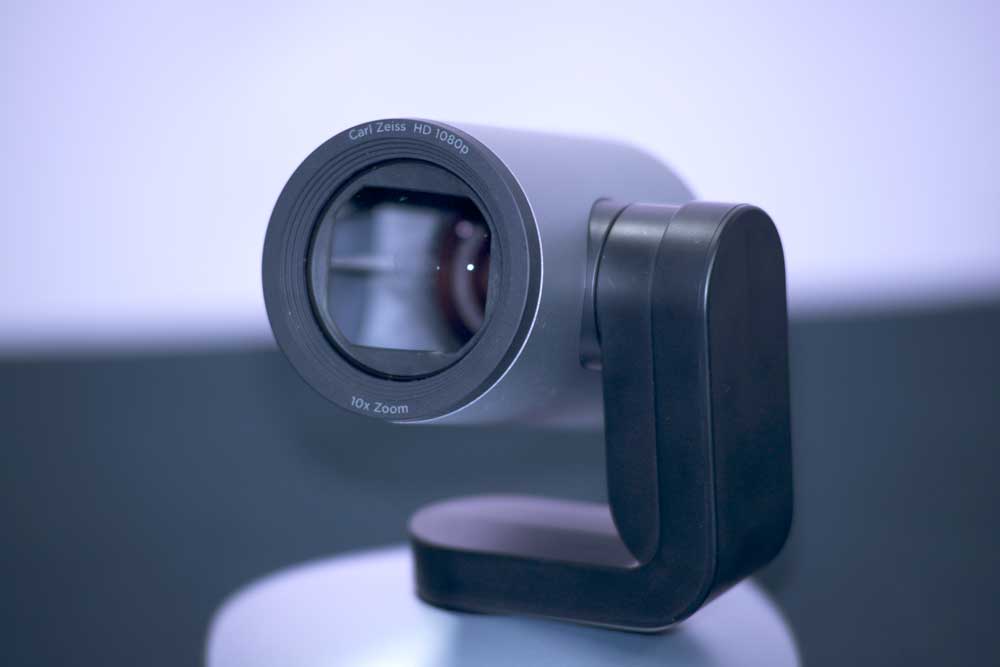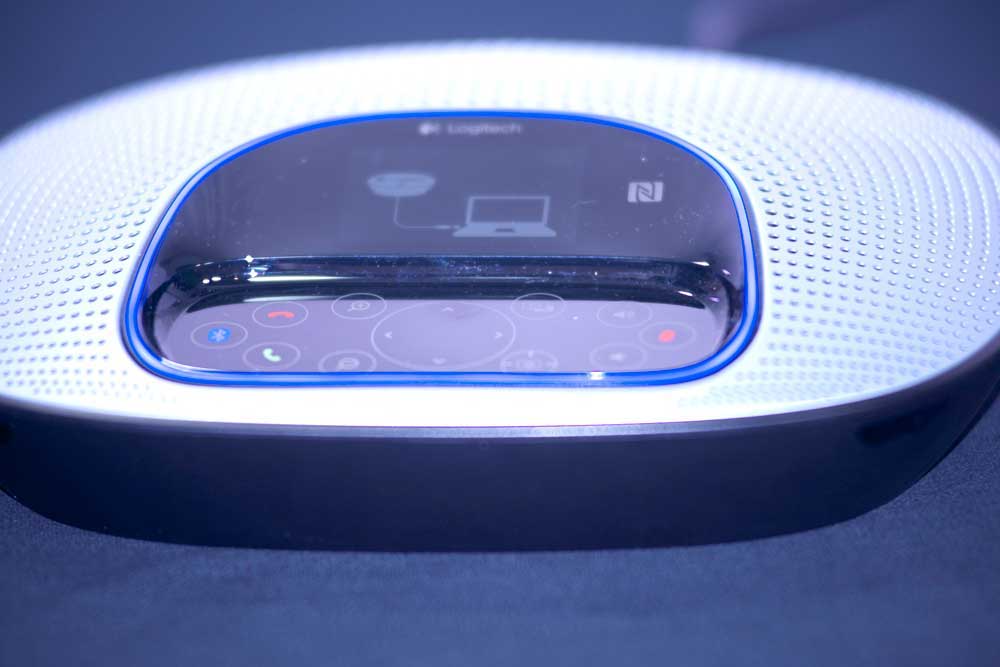Logitech cc3000e ConferenceCam review
Is this £700 camera and speakerphone combination value for money?

Despite the good quality AV output, the ConferenceCam ultimately falls into no-mans lands due to the price.
-
+
Plug-and-play; Good quality video and audio; Works with popular apps
-
-
No manual controls; No expansion; Needs a PC, Mac or Chromebook
If you haven't got the budget for an expensive audio/visual unit from the likes of Polycom, Vidyo or Cisco, Logitech's cc3000e ConferenceCam could fill the void.
The ConferenceCam uses a PTZ (pan, tilt and zoom) camera head together with a separate speaker phone unit to provide conference calling capabilities. There's also a small handheld remote to control the camera, and basic functions of the calls.
Unlike other video conferencing tools, you can't use the ConferenceCam as a standalone device. It needs to be hooked up to a PC, Mac or even a Chromebook.
Logitech doesn't provide any software in-the-box but this isn't an issue. The ConferenceCam is certified to work with popular video calling services including Lync, Jabber, Skype and WebEx. There's nothing to stop you hooking it up to Google's free Hangouts service either.
We would have liked a configuration utility to control camera settings or to test connections, though.
Setup
You'll be up and running in minutes and if you've got a PC or Mac with an Intel Core processor, at least 2GB of RAM and stable internet connection.
The USB plug-and-play interface makes the ConferenceCam a doddle to setup. There's a cable for the audio unit and the video camera, then a power cable for the interface box and a USB lead to connect it to the host computer.
Connect the cc3000e to a computer and the PTZ unit will wiggle to show you it's alive. The speaker unit will also display an icon if it's not connected properly.

Cable lengths are generous. There are two 16-foot cables connecting the hub to the speakerphone and camera. The USB attachment is 10-feet long. Logitech supplies Velcro cable ties to neaten it all up too. We're left with the feeling it's been designed to packed up and moved around.
However, trailing a four cables across a meeting room give an untidy appearance and it's not great for reliability. It would be interesting to see whether Logitech could build a similar unit using wireless connectivity to minimise wires and use Cat5 cables, for greater installation flexibility.
The speaker unit is designed to go on table or desktop; the camera could go on a table or shelf, but also has a standard tripod bush on the underside, which gives more mounting options.
Sound and Vision
The video camera uses a single CMOS chip and a Carl Zeiss lens to deliver 1080p full HD quality at 30fps. This is similar to what you can expect from a consumer-grade camcorder. Our test unit arrived with a large mark on the lens, although this didn't affect video quality.
The speaker unit is standard conference phone design, with soft buttons to make and release calls; an LED ring around the controls lights up when the unit is operating.

Audio coverage is good and echo cancellation works well. Although as with any speakerphone, room acoustics will come into play. Clarity of speech will depend on how carefully the unit is placed, and where speakers sit, in relation to the audio box.
The camera unit has a 260 degree pan, 130 degree tilt and 10x zoom capabilities so its possible to switch focus between participants in a group chat. This opens up the possibility of using the cc3000 for live streaming or webinars rather than just point-to-point calls. But whilst the ConferenceCam is suitable for a handful of users, going beyond this limit we see it struggling.
Another letdown is the inability to connect up peripherals. Even a 3.5mm mic jack would improve flexibility, giving the option of running a tabletop (boundary) mic, or a clip mic for a presenter, into the audio box. Other conference phones have extra mic hook ups, so it's an omission from the cc3000.
Overall
AV quality is good and Logitech scores points for ease of set up but falls down on a lack of flexibility. There are no manual controls for the camera, and the system is not expandable. You cannot add an additional mic, or record video locally either.
Priced at 700, personal users and SMBs will struggle to justify the cost on top of laptop with an embedded camera. IT departments looking to set up a video conferencing room are also likely to spend more on a dedicated camera and encoder, or a standalone unit that doesn't rely on a PC.
Verdict
Despite the good quality AV output, the ConferenceCam ultimately falls into no-mans lands due to the price.
OS: Windows 7 or 8 (Note: Win 7 today would be HD through MJPG. Driver for H.264 is TBD). Mac OS X 10.7 or higher or Google Chromebook Version 29.0.1547.70, Platform 4319.79.0
Processor: At least 2.4 GHz Intel Core 2 Duo processor
RAM: 2 GB RAM Ports: USB 2 or USB 3
Get the ITPro daily newsletter
Sign up today and you will receive a free copy of our Future Focus 2025 report - the leading guidance on AI, cybersecurity and other IT challenges as per 700+ senior executives
-
 Westcon-Comstor and Vectra AI launch brace of new channel initiatives
Westcon-Comstor and Vectra AI launch brace of new channel initiativesNews Westcon-Comstor and Vectra AI have announced the launch of two new channel growth initiatives focused on the managed security service provider (MSSP) space and AWS Marketplace.
By Daniel Todd Published
-
 Third time lucky? Microsoft finally begins roll-out of controversial Recall feature
Third time lucky? Microsoft finally begins roll-out of controversial Recall featureNews The Windows Recall feature has been plagued by setbacks and backlash from security professionals
By Emma Woollacott Published
-
 The UK government wants quantum technology out of the lab and in the hands of enterprises
The UK government wants quantum technology out of the lab and in the hands of enterprisesNews The UK government has unveiled plans to invest £121 million in quantum computing projects in an effort to drive real-world applications and adoption rates.
By Emma Woollacott Published